Gloomy octopuses: their disputes over territory reach the point of absurdity (8 photos)
The animals got their nickname for a reason. 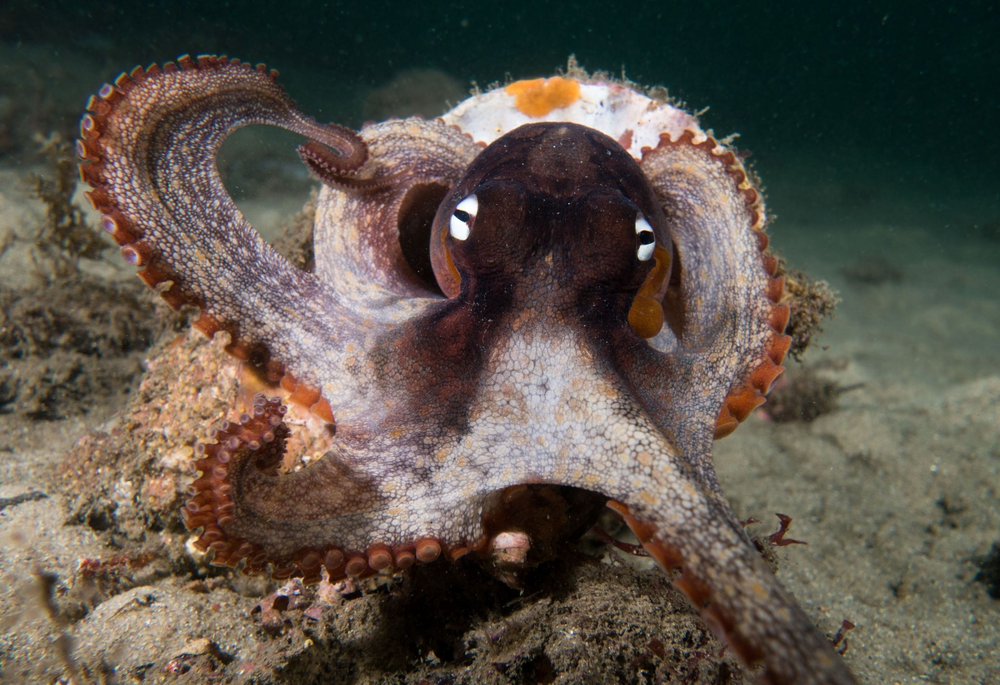
“Evolution gave, evolution took” - such a saying could be in use among cephalopods. After all, they still lost their, albeit bulky, but reliable living space in the form of a sink. But the gloomy octopus did not accept his fate. He took building materials into the tentacles, put on his helmet and went to build his dream house!
Gloomy, austere grey, black and white tones predominate on the small carcass, measuring two palms in size. Add to this the narrow, dissatisfied slits of the eyes - and here in front of you is that same evil neighbor behind a large fence who will shout at you for looking at his property. 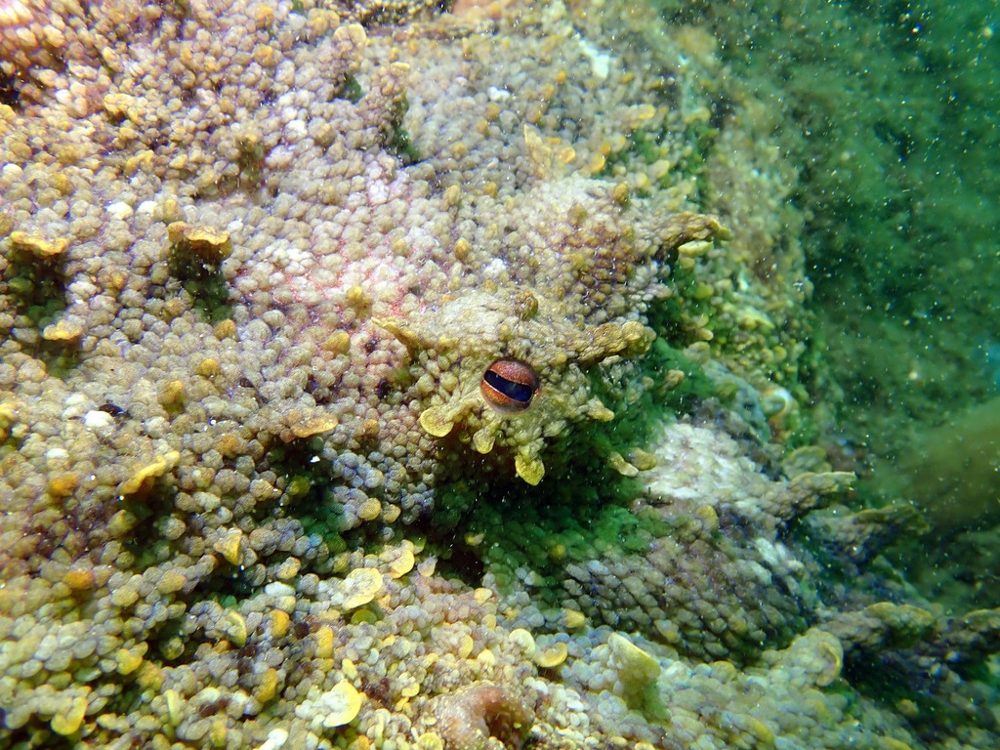
Even though gloomy octopuses love modest tones, when necessary, they are masters of disguise.
The sullen octopus is like that - it shoots at point-blank range for the reef and the yard. Having heard about the Australian chthony, the animal decided to firmly take up the defense, even though Australia was located a hundred meters of shallow water ahead. The clam started with a good daily routine. No daytime excursions while there are predators around! Only under the cover of darkness does the octopus carefully emerge from its lair for a new portion of live canned food - scallops, snails and other distant relatives that nature has not deprived of armor. Animals do not hesitate to devour their fellow creatures. 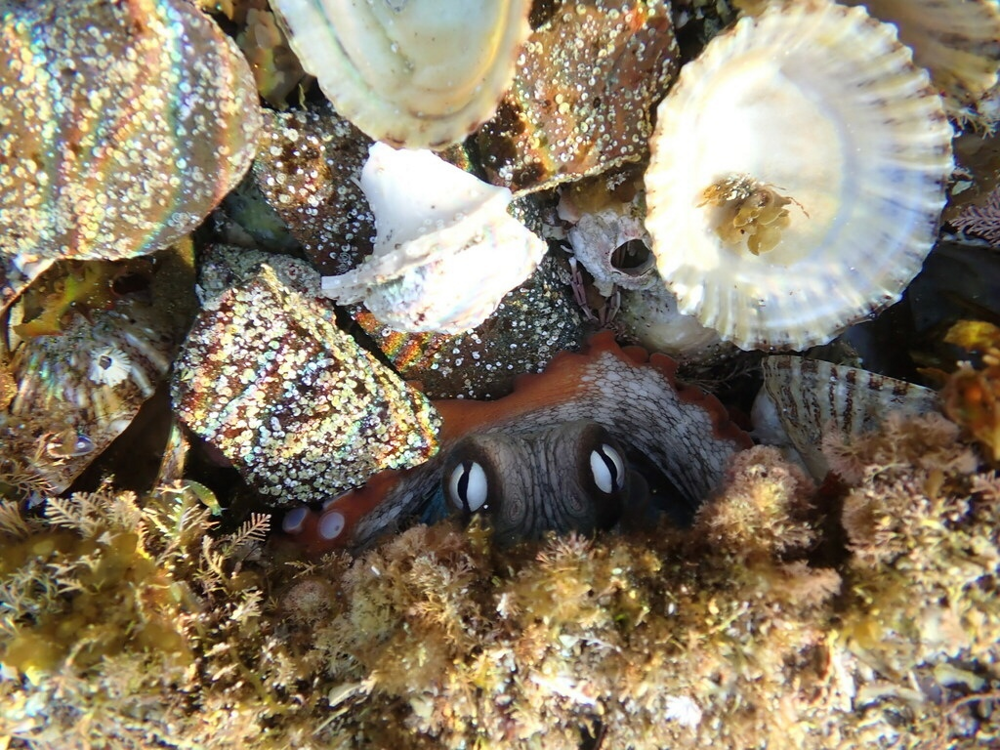
When the meal is over, the perspicacious mollusk does not leave empty shells at the crime scene. Everything goes to the house, everything goes to the family (from oneself). The octopus drags its shells to the hole, where it builds real walls around its nest. He's an architect, that's how he sees it. And we see a bunch of piled-up remains of shells and valves. 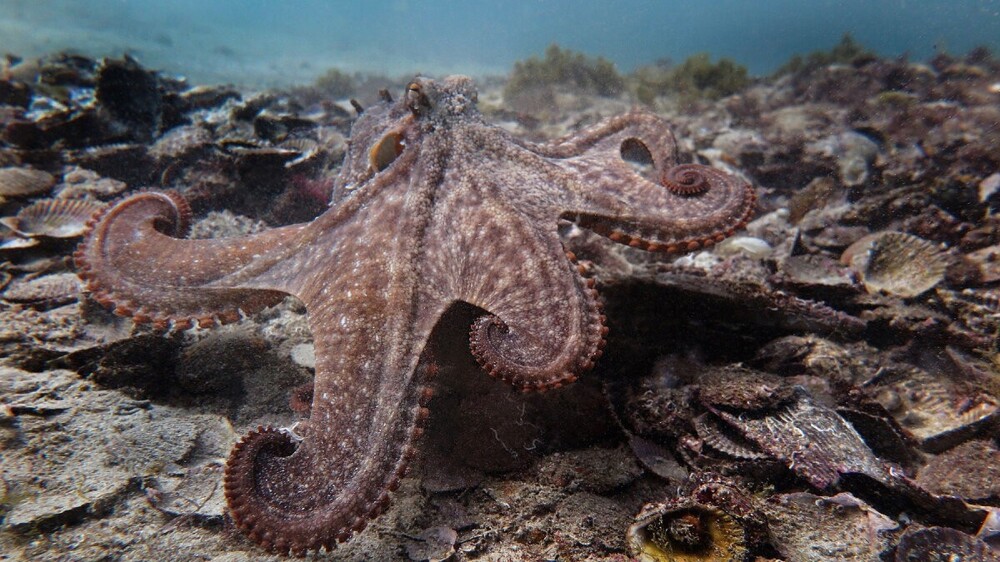
Usually such “bastions of loneliness” are located at a decent distance from each other. But scientists have found two underwater “cities” where octopuses gather together. Although Octopolis and Octlantis are more reminiscent of quarrelsome dacha cooperatives. Anarchy, fights, territorial claims and casual sex do not stop here throughout the year. 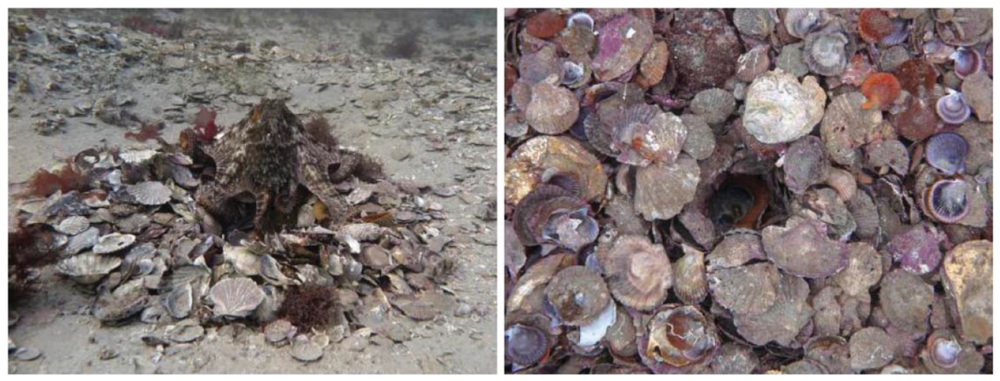
Octopuses have perfected the art of everyday conflicts so much that they have learned to throw shells at each other! The scheme is simple: you take the shell with one tentacle, then with the second, bring it to the siphon and - voila! The shell is sent along a parabolic trajectory into the enemy's hole. But usually it doesn’t come to blows; animals know how to clarify all boundaries without a fight. The one who got a little scared and turned out to be paler when meeting a potential opponent will have to give in. 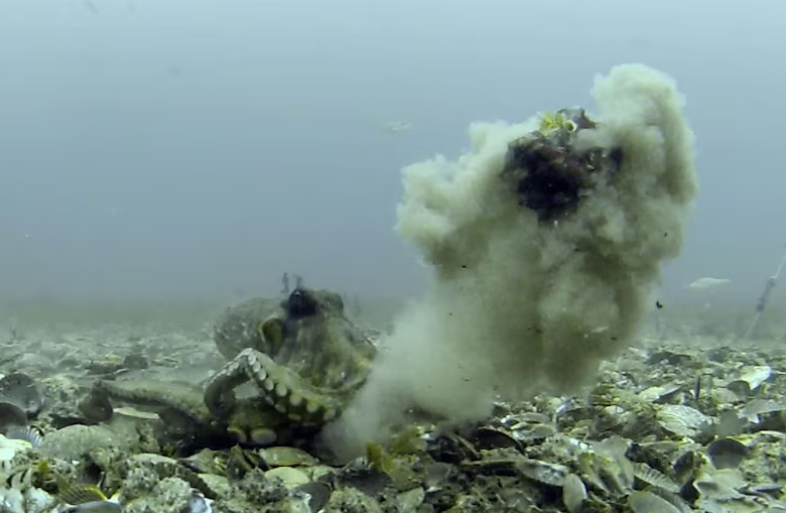
Unlike the war for hectares, amorous affairs among animals pass quietly. It’s even too quiet, as if this is not procreation, but smuggling. The male swims up to the female and tries to snatch her a “package” with his biological material - a spermatophore. If the guy likes him, the lady accepts the gift and moves on. Another suitor may approach you, then another and another... 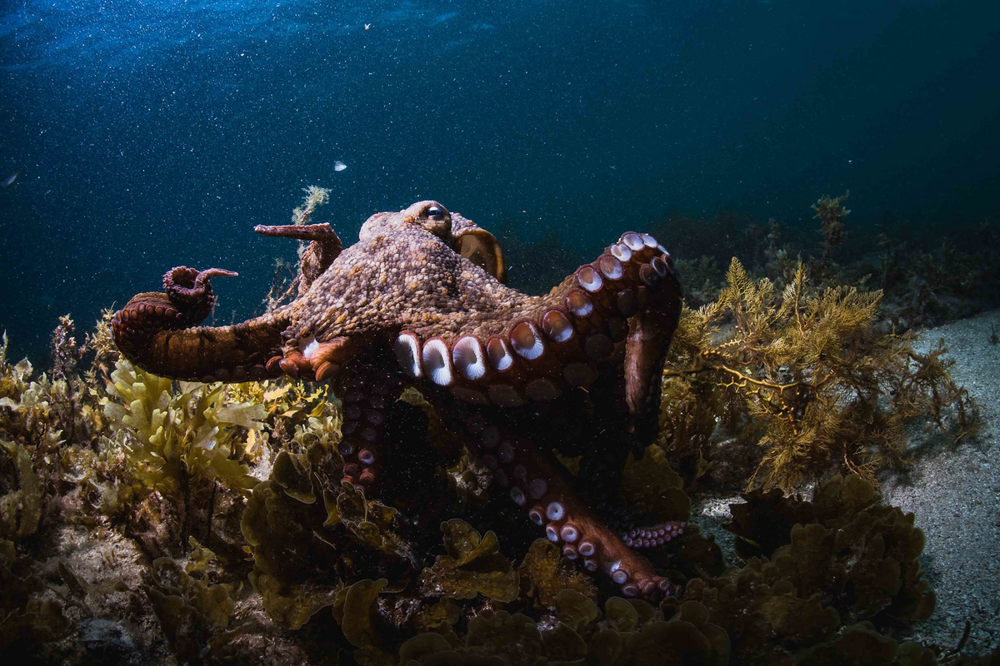
Darling, you are my first! For today. A little later I have three more romantic meetings!
The female collects several spermatophores from different suitors - all for the sake of genetic diversity. She is usually in no hurry to open packages and become a mother; it can take up to 100 days until she decides it’s time to find a secluded place to lay eggs. The young mother’s doubts are understandable. For her, parental share is a one-way path. 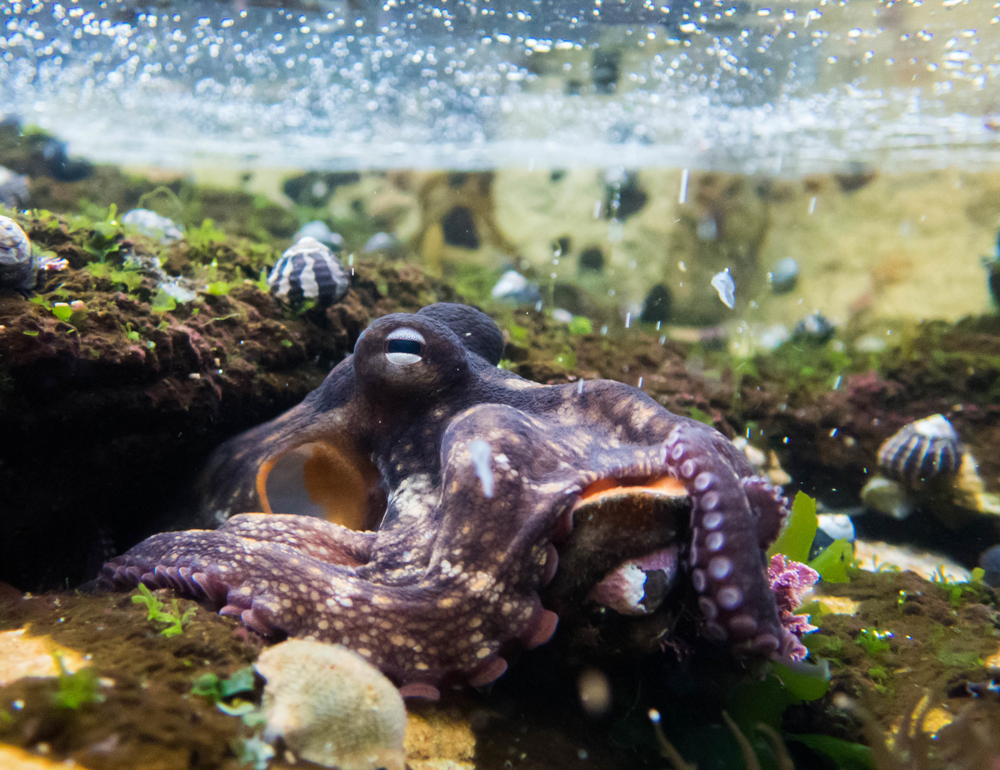
Being a mother is hard, even if you're a clam!
The female will guard a clutch of 60-200 threads with microscopic eggs: blowing water over it, straightening it and cleaning it until she dies from exhaustion and hunger. In the meantime, the baby octopuses will become plankton, so they can swim freely, and then hide from the world in another hole a few months later.

























